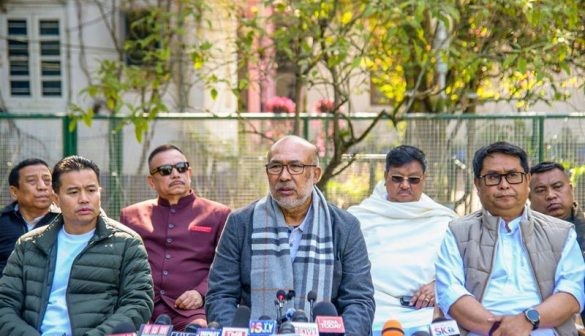President’s Rule Imposed in Manipur Amid Political and Ethnic Crisis
Why in the news?
On February 13, 2024, the Union Government imposed President’s Rule in Manipur after CM N. Biren Singh resigned. The decision follows ethnic violence between Meitei and Kuki-Zo communities and political instability, with no consensus on Singh’s successor.
Why was President’s Rule imposed in Manipur?
- On February 13, 2024, the Union Government declared President’s Rule in Manipur following the resignation of Chief Minister N. Biren Singh on February 9.
- Ongoing ethnic violence between the Meitei and Kuki-Zo communities since May 2023 has led to over 250 deaths and the displacement of 60,000+ people.
- The conflict began due to the Meitei community’s demand for Scheduled Tribe (ST) status, which the Kukis opposed.
- The BJP leadership struggled to reach a consensus on Singh’s successor, leading to a political crisis.
Judicial Oversight and Misuse Concerns
- The R. Bommai Case (1994) established that President’s Rule cannot be imposed arbitrarily and is subject to judicial review.
- The Supreme Court ruled that Article 356 should be used only as a last resort and cannot be applied for political reasons.
- Since 1950, President’s Rule has been imposed 134 times, often criticized as a political tool rather than a crisis-management measure.
Constitutional Provisions on President’s Rule:
- President’s Rule, or “State Emergency,” is imposed under Article 356 when a State government fails to function as per the Constitution.
- It is based on a Governor’s report or the President’s satisfaction that governance cannot continue constitutionally.
- Article 355 mandates the Union to protect States against external aggression and internal disturbances.
- Once imposed, the State’s executive functions shift to the Centre, and its legislative powers transfer to Parliament.
- Parliament must approve the proclamation within two months, with six-month extensions allowed up to a maximum of three years under specific conditions.






